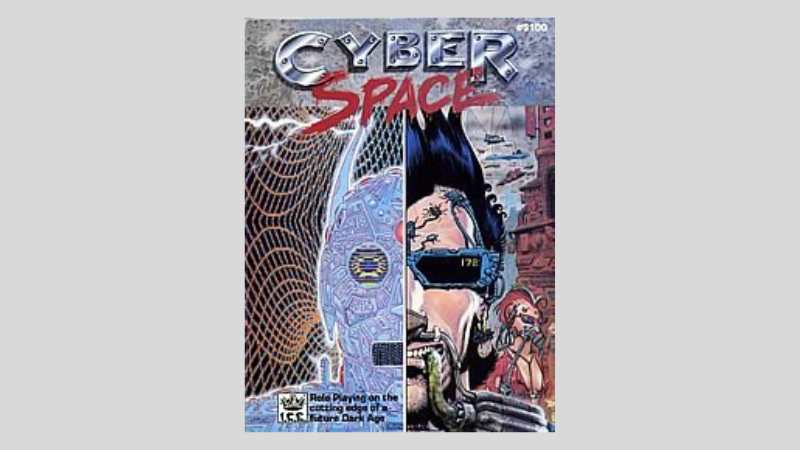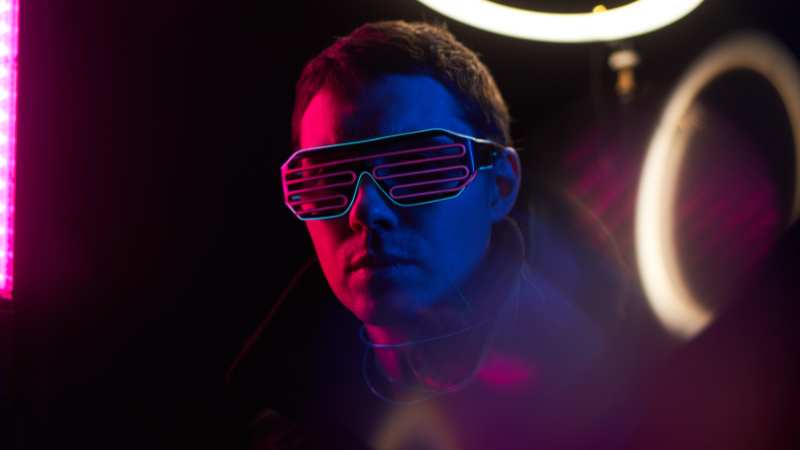(SQAUK) – In the late 1980s, a new role-playing game (RPG) emerged that captured the essence of a growing subgenre of science fiction: cyberpunk. This game was Cyberspace, published by Iron Crown Enterprises (I.C.E.) in 1989. The world was beginning to grapple with the implications of the digital age, and Cyberspace offered a glimpse into a future where technology and dystopian realities intertwined.
Before diving into Cyberspace, I.C.E. had already entered the world of science fiction RPGs with the Space Master system, released in 1985. Space Master’s detailed mechanics and vast universe laid the groundwork for the development of Cyberspace.

Cyberspace is set on a near-future Earth, specifically around the year 2090. The game’s backdrop is a dystopian urban sprawl centered around San Francisco, controlled by omnipotent MegaCorps. These corporations wield more power than governments, shaping the lives of every citizen.
Players could choose from a variety of occupations, each with its role in this cybernetic society:
- Jockey: Pilots can operate almost any vehicle, showcasing remarkable versatility and adaptability.
- Killer: In a world where it might often mean right, combat specialists are essential.
- Net Junkie/Net Head: Enter the world of hackers as they navigate the treacherous virtual reality of the net.
- Sleaze: Masters of social manipulation, excelling in the clandestine world of corporate espionage.
- Tech Rat: Proficient technicians are adept at fashioning and fixing the essential tools required for survival.
The first edition of Cyberspace was published as a 208-page softcover book. It featured cover art by Rick Veitch and interior art by a team of illustrators. The game system was a revised version of the Space Master system, customized to fit the cyberpunk theme.
After its initial release, I.C.E. published several adventures and supplements for Cyberspace in 1990 and 1991. This expanded the universe and provided more depth to the gameplay. In 1992, a second edition of the game was released, which refined the rules and added new content.

Cyberspace received mixed reviews upon its release. Some critics viewed it nearly identical to the previously published Cyberpunk by R. Talsorian Games, accusing it of plagiarism in certain aspects. However, others valued the depth that Cyberspace brought to every game element, from character backgrounds to detailed descriptions of the cybernetic world.
(Ad) Get the new book Hidden Axis: Forces Beyond the Visible World – Uncover the secrets they don’t want you to know. Dive into the truth about cosmic forces, government conspiracies, and humanity’s future.
Despite the criticism, Cyberspace remains a significant title in the history of RPGs. It captured players’ imaginations with its gritty portrayal of a cybernetic future and influenced the development of cyberpunk in gaming.
Today, Cyberspace stands as a testament to the early days of cyberpunk gaming. Its influence can be seen in the myriad of cyberpunk-themed games that followed. For those who experienced it, Cyberspace was more than just a game; it was a portal to a future that seemed both thrilling and terrifyingly possible.

Cyberspace might not be as prominent in RPGs today, but its influence continues. It harkens back to when the digital world was still a mystery, and the future was a blank canvas for our darkest and most hopeful imaginings.
Incorporating the existence of cyborgs into the history of the role-playing game Cyberspace adds a fascinating layer to its narrative. As of 2014, the concept of cyborgs—beings that combine organic and biomechatronic body parts—has moved from the realm of science fiction into reality. While the term “cyborg” might conjure images of futuristic superhumans, the truth is more grounded and widespread than many realize.

In 2014, the world had already seen individuals who could be considered cyborgs. People with pacemakers, advanced prosthetics, or digital hearing aids are technically cyborgs because they integrate technology into their bodies to enhance or restore normal human functions. These enhancements range from subtle, like microchip implants used to unlock doors or start vehicles, to more complex, such as brain-computer interfaces that allow for direct communication between the human brain and external devices.
With its cyberpunk setting, the role-playing game Cyberspace naturally aligns with the cyborg phenomenon. It presents a world where technology and humanity blend, mirroring the real-world advancements seen in 2014. The game’s narrative can draw from these real-life examples to enrich its setting. Players might encounter characters with cybernetic enhancements that reflect the actual state of human augmentation.

The emergence of cyborgs in 2014 is a testament to human ingenuity and reflects the current times. It’s a world where life imitates art, and games like Cyberspace mirror our reality. As we push the boundaries of technology and biology, the line between humans and machines becomes increasingly blurred, giving rise to a world where cyborgs are not just characters in a game but individuals walking among us.
Exploring the presence of cyborgs in 2014 adds depth to the Cyberspace RPG. It provides a tangible connection between the game’s fictional world and our technological advancements, reminding us that the future envisioned in cyberpunk lore is closer than we might think.
Shout out to the Cyberspace community!


